
Us
A festival is an event ordinarily celebrated by a community and centering on some characteristic aspect of that community and its religion or traditions, often marked as a local or national holiday, mela, or eid. Next to religion and folklore, a significant origin is agricultural
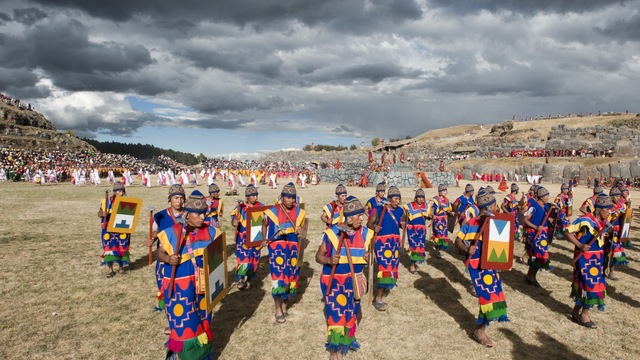
On the outskirts of Mexico City, the urban municipality of Tultepec is home to more than 50% of Mexico's hand-crafted fireworks production, making it the ideal location for a huge, multi-day display of festive explosives. Originally a 19th-century celebration held by local fireworks production guilds each year on March 8 in honor of San Juan de Dios, the patron saint of fireworks makers, the present-day incarnation of the Feria de la Pirotécnia Nacional (National Pyrotechnic Festival) first sparked in 1989. Each year since, about 100,000 people have descended upon this usually quiet area for nine exciting, dangerous days in March, running, skipping, hopping, jumping and dancing through the world's most prolonged (and waiver-free) display of pyrotechnics. The festival includes three main events of powder-keg glory, as well as carnival rides, kiosks hawking regional street food, musical concerts, dance performances, and a ceremonial release of paper balloons.
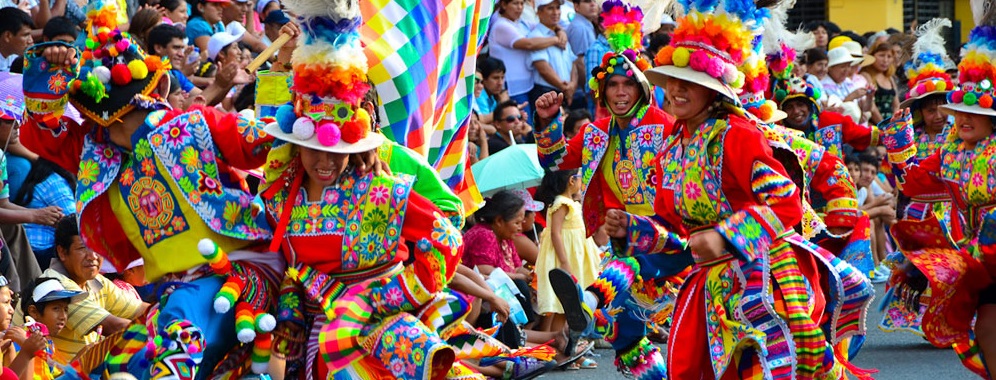
The Virgen de la Candelaria, Patron Saint of Copacabana (Bolivia) is the most revered saint in Peru and Bolivia, and the festival to honour her, the most elaborate event in the calendar of either country. Endless parades, music, traditional dancing, ornate costumes, and intricate masks are at the forefront of the two-week festivities at the beginning of February, with an abundance of food and drinks offered to all who attend. In Puno, on the Peruvian shores of Lake Titicaca, this is the highlight of the cultural calendar and the second-largest cultural festival in South America, second only to the Rio Carnival. In Copacabana, Puno’s counterpart on Lake Titicaca, the Festival of the Virgin of Candelaria is an absolute explosion of celebrations. If you can only attend one, we’d say the Copacabana festival is perhaps the most enticing, as this town is a normally a quiet and unassuming fishing village for 350 days a year. The contrast, thanks to the mega-party which attracts revellers from all over the country, is an incredible spectacle. Of all the cultural festivals in South America, this is arguably the most authentic and inspiring, and the eclectic mix of pagan and Catholic rituals is simply spectacular.
Oh, and in case you’re wondering…reaching Puno from La Paz on a two-day catamaran voyage would certainly not be a shabby way to get that party started!
Picture a connect-the-dots rainbow of mammoth balloons filling the sky, from the horizon to the stratosphere, while thousands of tiny-as-ants onlookers pepper the flats below. This is the Albuquerque International Balloon Fiesta, which takes place each year at the southern end of the fabled Sangre de Cristo Mountains, just east of Navajo country and an hour from 400-year-old Santa Fe. From the early sunrise Dawn Patrol to the evening’s “Glowdeo” parade, balloon races, and much more, this event is a spectacle of wonder for all ages. The festival is book-ended by two weekends in October with balloon die-hards holed up in Albuquerque for the entire event.
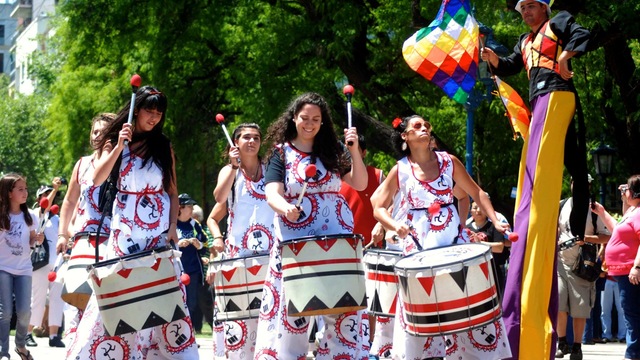
Recently, the government of Argentina has extended the event to ten days, but the main attractions begin on the first Friday evening in March with the Queens White Way (Vía Blanca de las Reinas) parade of the 18 queens from the provincial departments. The women wear costumes and ride in elaborately decorated carriages, complete with music and lights, celebrating the winemaking traditions and culture of their departments, complete. The queen hopefuls ride with the outgoing queen she’s replacing. People line the streets for a glimpse of these beauties—and the chance to catch a cluster of grapes, fruits that the women often toss into the crowd. If you’re lucky, you may even receive an entire bottle of wine.
Then, on Saturday morning, everyone gathers for another parade, the Queens Carousel (Carrusel Vendimial), which again features queens on their chariots, this time followed by men wearing gaucho-styled outfits riding on horses. Traditional band and dancers representing different provinces of Argentina and Latin American countries typically follow the women. You can also expect parading musicians and street actors to take part in the festivities. The event often attracts upwards of 200,000 onlookers. Running for Harvest Queen is serious business—the women have their own fans and groupies, and their pictures are often found throughout their respective regions, promoting their candidacy for queen. The Carousel is a morning-to-afternoon affair, sometimes lasting five or six hours.

Those old world pagans sure knew how to translate religion into party. In Catholic Europe beginning in the Middle Ages, all decadent food and drink had to be consumed prior to Lent to remove temptation during the 40-day period of fasting leading up to Easter (Carnival period begins on the Saturday before Lent and ends on Shrove Tuesday, also called Fat Tuesday). Historically, winter supplies were emptied in an all-out, gluttonous feast of the flesh to welcome the spring. As these traditions migrated to the Portuguese colony of Brazil, Rio Carnival transformed into something new . While the reformations and Inquisition attempted to sweep Europe of sin and tamed the wild feasts, the church could not contain what had developed in the Southern Hemisphere.

“Boi Bumba” roughly translates as “Beat the Bull,” and relates to a popular folktole told throughout northeastern Brazil that weaves cultural threads from indigenous Amazonian peoples, Portuguese colonists, and Catholicism. During Boi Bumba, the story isn’t just simply told. In the Parintins version, it’s an elaborate stage production featuring parade floats, giant puppets, hundreds of costumed performers and lots and lots of feathers and drums.
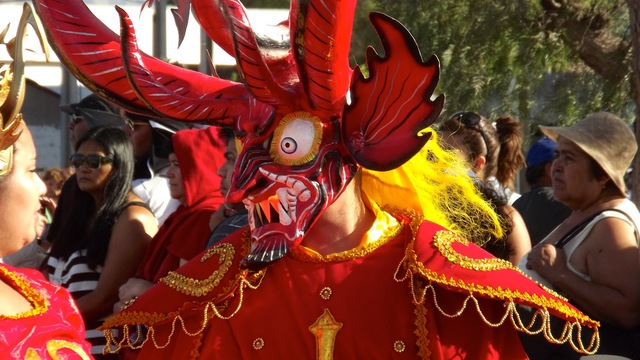
“Boi Bumba” roughly translates as “Beat the Bull,” and relates to a popular folktole told throughout northeastern Brazil that weaves cultural threads from indigenous Amazonian peoples, Portuguese colonists, and Catholicism. During Boi Bumba, the story isn’t just simply told. In the Parintins version, it’s an elaborate stage production featuring parade floats, giant puppets, hundreds of costumed performers and lots and lots of feathers and drums.
Most groups of Diablos Danzantes perform with accessories such as maracas, whips, crucifixes and rosaries, all used as an effort to ward off evil spirits. Live music accompanies the dancers, mostly percussion and string instruments. The colorful parade makes its way to the steps of the local church, where the Sacrament has been laid out. The devils surrender to the Sacrament in the ultimate symbol of the triumph of good over evil. This is, after all, the true meaning of the Feast of Corpus Christi, the Body of Christ.
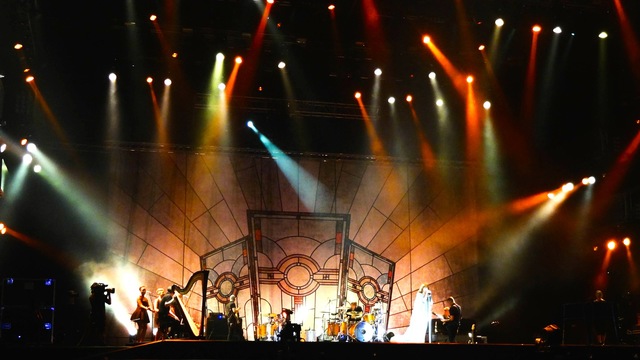
Let's say, hypothetically, you're a music lover who's never made it to a concert. And you want to make up for lost time. No problem. Get thee to Rio next September. As long as you have plenty of energy and a week to spare, you can catch up on a lifetime's worth of music. And not just any performers. We're talking a living, breathing, heart-racing Who's Who in rock history, with headlining stars at last year's festival including Beyoncé, Muse, Justin Timberlake, Metallica, Bon Jovi, Bruce Springsteen and the E Street Band, and Iron Maiden.
Marking its 30-year anniversary at 2015's event, Rock in Rio has rocketed from a memorable 1985 show in Rio de Janeiro to a behemoth, week-long celebration of rock music (with a little pop, blues, rap and Música Popular Brasileira sprinkled in for good measure) with offshoots in three countries. In 1985, fresh from its dictatorial past, Brazil had never hosted a festival on this scale. Entrepreneur Roberto Medina changed that with the birth of Cidade do Rock , the City of Rock. This guy aimed big. Among the 28 bands at the first show? Think AC/DC, Iron Maiden, Ozzy Osbourne and Queen.
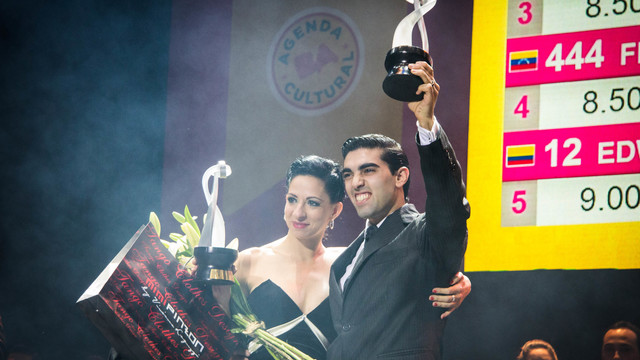
The roots of tango stretch back to the 1800s, when the port town of Buenos Aires saw a preponderance of influences—from culture and art to music and dance—meld together. Tango, which is a mixture of European stoicism and African extravagances, has ambiguous roots, but many theorize that it started amongst lower-class citizens and may have originated in Argentine brothels. This dance oozes sex and is a visual metaphor for the very ritual of seduction. In 2009, tango was recognized by UNESCO as an Intangible Cultural Heritage.
The festival’s organizers call it “the world’s biggest tango extravaganza,” and although most of Buenos Aires has tango fever all month (and pretty much all year), the festival is officially 18 days long. It begins with La Festival, a 9-day celebration of tango shows, recitals, classes, milongas (dances) and film screenings at venues across the city. La Festival opens with a massive open-air milonga, where you’ll find tens of thousands of tangueros dancing along the streets.
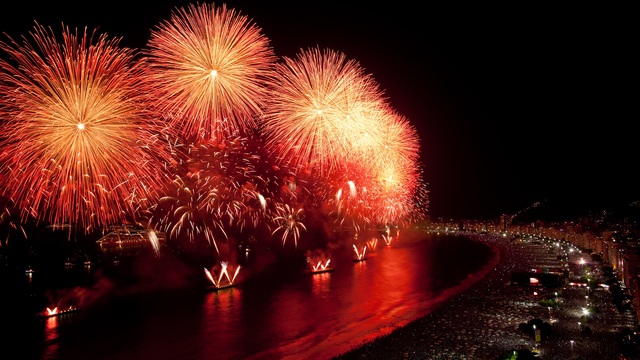
Much like other festivals in Brazil, Réveillon is an eclectic mix of religion, tradition, superstition and festa (that’s Carioca for party). Réveillon borrows its name from the French, its religion from Africa and the local superstitions ever continue to evolve. Before the clock strikes midnight, the festival is mostly a family affair. This custom rings true for most of Latin America.
Families and friends gather in the millions with food and drink, because food is love in the southern part of the world. And speaking of food and recipes, on this night pork is in and chicken is out, because our feathered friends scratch backwards without moving forward when feeding, and the first day of the New Year is all about forward motion. Backwards was so last year.
Live international bands and samba line the Avenue Atlantica and it all really starts shaking around 8 p.m. But the most iconic part of the festival is the all-white dress code. White symbolizes purity, peace and renewal while appeasing Iemanjá, the goddess of the sea. With high hopes for the New Year and honoring the year behind us, white is right.
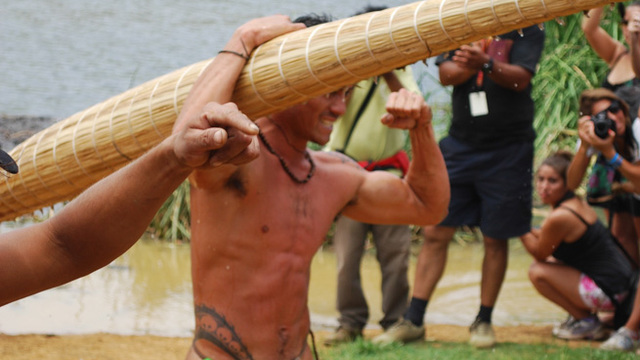
Easter Island (Rapa Nui) may be best known for the monolithic heads, or moai , that dot its landscape. However, Easter Island’s claim to fame each summer (that’s early February when you’re south of the equator) is Tapati Rapa Nui, a festival that is at once a test of masculine strength and feminine grace, a celebration of local culture and a welcoming of visitors. Unlike many island festivals, Tapati Rapa Nui has been a festival for locals, by locals, rather than a tourist attraction. In 1969, just a few years after Easter Island gained some autonomy from Chile, Semana de Rapa Nui was born as a simple summer festival that featured singing, dancing and a small parade. Over the years it has evolved, including a name change, but Tapati Rapa Nui has always been about celebrating Polynesian pride. While tourists are welcome, and tend to pack the island this time of year, this is not a commercial luau or something you’d find at a hotel in Waikiki. Expect true authenticity in these festivities, and a deep appreciation and respect for the culture by the Rapa Nui people and all who attend.
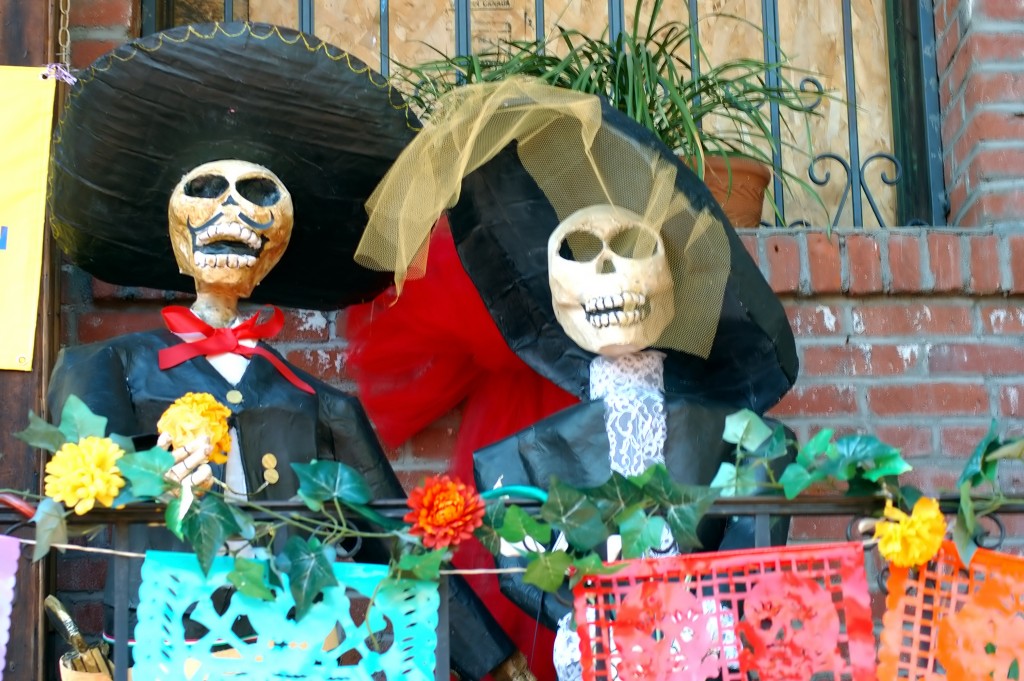
Ironically enough, you’ll be hard-pressed to find a more colourful and happy festival anywhere on earth, like the Day of the Dead in South America. South Americans take the idiom ‘gone but never forgotten’ very literally indeed, and are renowned for putting on phenomenal festivities to celebrate their dearly departed. El Dia de los Muertos is closely linked to the Catholic tradition of All Saints and All Souls Days (November 1st and 2nd respectively) although the tradition has been alive and well here for at least the last 3,000 years – ever since indigenous cultures had the habit of keeping their passed beloved’s skulls as keepsakes, decorating them and bringing them out on special occasions to honour their memory. How lovely does that sound? Continent-wide, people join processions to their local cemeteries where they make offerings of particular foods and flower arrangements. The most interesting festivals are in Bolivia, where the ancient tradition of digging up skulls and decorating them for the day is still very much alive.